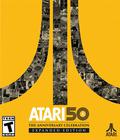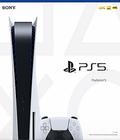Buy PlayStation 5
At last, we have seen the launch of the next generation of consoles. The PlayStation 5 and Xbox Series have both hit the market and are finally in the hands of people who were lucky enough to catch a preorder or find one on store shelves. It's been seven years since the PS4 came out, and it really shows. The next generation PlayStation doesn't reinvent the wheel, but it shows that more modern technology can go a long way — and seven years is a very long time in technology.
The system is the first thing you'll notice about the PS5. Significantly larger than the PS4, the PS5 looks like a designer PC tower. It requires a stand to sit comfortably on its side, and standing up or sitting down, it takes up quite a bit of room. On the plus side, it's whisper quiet. The design is too ostentatious for my taste and prioritizes style over useful form factor. Hopefully, the inevitable iterations of the PS5 will reduce the size or awkwardness of the system's shape.
The new DualSense controller is the latest iteration of the classic PlayStation controller, and superficially, it's pretty familiar. It has the same basic layout as the PS4 controller with the addition of a built-in microphone that can be enabled or disabled with a button tap. It's comfortable in the hands and feels like a solid new iteration of a controller that has worked for decades. The most significant new feature is the haptic feedback, which gives the controller more direct feedback than traditional rumble. The two shoulder triggers actually gain resistance if the game demands it. In Watch Dogs: Legion, for example, aiming and firing your gun causes the trigger button to require more of a press to simulate the feeling of pulling a trigger. It's a super cool feature and adds to the immersion — although the first time it happened, I thought that my new controller was broken right out of the box. After some experimentation, I disabled the feature when games offered it, since you're pulling a trigger button a dozen times in 20 seconds, so you don't want it to be tougher to pull.
The core PS5 interface is very familiar. In many ways, it is almost identical to the PS4, only with some more polish and much quicker loading times. There are a lot of nice features that improve the experience. Tapping the PS button once brings up a pseudo-taskbar that instantly lets you check friend status, downloads, or put the system into rest mode. The main screen also features tips and tricks as well as news about the games you are playing, similar to something you'd see on Steam. There are also a good number of accessibility features. My favorite is the inclusion of system-level settings for default options for games. You can set games to start with subtitles on, controls inverted, and even start on Hard mode (if the game supports it).
As far as the PS5's power goes, it's still too early for us to get a grasp of what the system can do. Most of the big games on the PS5 also have a PS4 version, so the best you can do is compare the two. The PS5 versions do look significantly nicer and run significantly smoother than the PS4 counterparts. Assassin's Creed: Valhalla on the PS5, for example, is almost night and day compared to the PS4 version. Most of the games also seem to feature a choice between a Performance mode that pushes for smooth 60fps, or a polished mode with various graphical features turned on (e.g., ray tracing) but runs the risk of lessening performance at higher resolutions. This sort of choice isn't new, but it's something I hope we continue to see.
The biggest difference is the PS5's SSD, which tremendously lowers load times. I don't think I saw a load time more than 2-3 seconds on any game on the PS5. The downside is that the SSD only has about 600 GB of space, which will be eaten up fairly quickly with the ever-ballooning size of games, and as of this writing, the PS5 won't support external hard drives for PS5 games.
The PS5 is also backward compatible with PS4 titles, and to my pleasant surprise, these games benefit a lot from being played on a PS5. I popped in Yakuza: Like A Dragon, and the load times were so reduced that I barely had time to see the load screen pop up before it was loaded. I also tried Star Wars: Fallen Order and found that it also had less slowdown than the PS4 version. This doesn't mean that games are universally improved, but at least every title that I tested seemed to experience an improvement on the PS5. If you play import games on your PS4, continuing to do so on the PS5 is still very simple, but you have to jump through a few more hoops when it comes to DLC. Overall, if you have a PS4 and a mostly digital lineup of games, then it's everything you could want.
Overall, the PlayStation 5 feels like an upgrade but not a game-changer. Going from the PS4 to the PS5 feels like night and day when you compare the performance of similar games. This is a console generation where the smaller things, like loading time or optional visual effects, are more significant than any sort of huge graphical leap. If you're happy with your PS4, there's no reason to rush out for a PS5 yet. For a while, it's just going to be a way to play PS4 games on a more robust platform. The PS5 is a significant enough improvement that I don't see myself returning to my PS4 unless I must. You sometimes get what's expected with these console upgrades, and the PS5 is exactly that: solid and dependable.
Score: 8.0/10
More articles about PlayStation 5











 Inspired by a global community of creators, PS5 will bring players into game worlds with unprecedented speed, visual fidelity and sensory immersion.
Inspired by a global community of creators, PS5 will bring players into game worlds with unprecedented speed, visual fidelity and sensory immersion.


